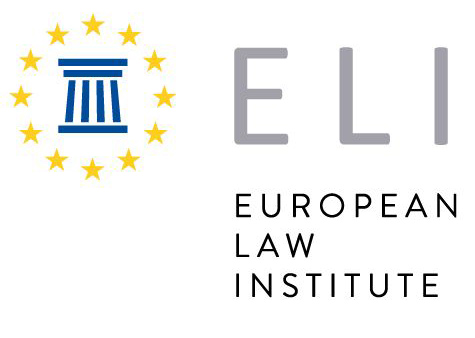Update of ELI’s Detention of Asylum Seekers and Irregular Migrants and the Rule of Law: Checklists and European Standards
Background
The proposal seeks to update the ELI Statement on Detention of asylum seekers and Irregular Migrants and the Rule of Law: Checklists and European Standards.
The likelihood that in the short-term the existing EU legal grounds for detention of asylum seekers and illegally staying third-country nationals (Reception Directive 2013/33/EU, Dublin Regulation 604/2013, Return Directive 2008/115/EC and Article 26 of the Procedures Directive 2013/32/EU) will be replaced by the next (third) phase of harmonised EU law on asylum and return, based on the Pact on Migration, are minimal if any at all. Hence, case law of the Court of Justice of the European Union (CJEU) and the European Court of Human Rights (ECtHR) will continue to develop and determine ‘common’ rules on detention in cases of the aforementioned groups of individuals on the basis of existing legislation. Effective implementation of EU law on detention, which affects the most fundamental human rights, such as liberty, prohibition of inhuman treatment, sometimes in conjunction with the principle of the best interests of the child and the principle of family unity, as well as the right to an effective remedy before an independent tribunal (Article 47 of the Charter), when the principle of mutual trust is applicable, remains a relevant indicator of observance and respect of the rule of law in Europe in general. In other words: a discrepancy between declaratory values on which the EU is founded and their effective respect in practice remains a challenging issue to be addressed by the Member States and (the ELI).
The case law of the CJEU and ECtHR on detention, based on Article 6 of the EU Charter (Article 5 of the ECHR) in conjunction with the prohibition of inhuman treatment in Article 4 of the EU Charter (Article 3 of the ECHR), particularly in cases of vulnerable applicants, with the possible application of other rights, such as Article 7 of the Charter (Article 8 of the ECHR) and Article 24(2) of the EU Charter and Article 4(3) TEU continue to be very specific, detailed and methodologically elaborate. Thus, six years after the publication of the ELI Statement the time for an update is ripe to ensure that powers of the Member States in that particular field of law are exercised with better respect of the fundamental values that are proclaimed in primary EU Law.
Aim
The aim of the revision is not to evaluate or to comment on the quality of harmonisation or the implementation of EU law, the case law of the CJEU or the case law of the ECtHR by the Member States of the EU/Contracting States of the ECHR. The presumption is that the problem of non-satisfactory implementation of EU law and case law of the ECtHR (which is partly visible in outcomes of cases against the Contracting States of the ECtHR and in requests for preliminary rulings submitted to the CJEU) is persistent. The presumption is also that cases on detention and judicial control of detention are highly complex legal issues because of the strong interplay between various legal sources that need to be combined in each individual case: EU law, the case law of the ECtHR, national procedural rules, and other rules of international law, such as the UN Convention on the Rights of the Child. In such cases, checklists are indispensable tools for raising the quality of decision making and adjudication processes, while at the same time keeping to the strict requirements for speediness of judicial control.
The target audience of the updated ELI Statement remains the same as that of the initial ELI Statement. These are: judges of national courts, judges of international courts, lawyers and decision makers in the Member States of the EU and in the Contracting States of the ECHR.
Outcome
The expected target outcomes are as follows: the most important updates will relate to the three checklists and their explanatory notes. These are sections 4 (Detention under the Dublin III Regulation and the ECHR), 5 (Detention under the Return Directive and the ECHR) and 6 (Detention under the Recast Reception Directive and the ECHR). Insignificant updates will be made in section 1 on ‘Purpose and Methodology’. Small but necessary updates to section 2 on ‘Detention and the Rule of Law’ will be made as regards some statistical information on the number of detention cases in Member States of the EU after September 2017 and perhaps about some new seminal judgments on detention of national courts of the Member States of the EU. Section 3 on the ‘Interplay of EU law, the ECHR and national law in the context of the protection of human rights’ will also be updated based on new case law of the CJEU and ECtHR, particularly on the ‘principle of mutual trust’ under EU law and the ‘presumption of equivalent protection’ under the case law of the ECtHR.
Project Reporters
Other Project Team Members
- Pamela McCormick
- Tamas Molnár
- Fabiane Baxewanos (temporarily replaced by Riccardo Viviani between April and June 2024)
Project Assistant
Advisory Committee Members
- Rosana Garciandía
- Ece Göztepe
- Laura Guercio (Assessor)
- Paola Iamiceli
- Julian Phillips
- Allan Rosas
- Saša Sever
- Geoffrey Vos (Assessor)
- Irina Zlatescu (Assessor)
Observers
Association of European Administrative Judges (AEAJ) (Represented by David Rabenschlag, member of WG on asylum and immigration)
